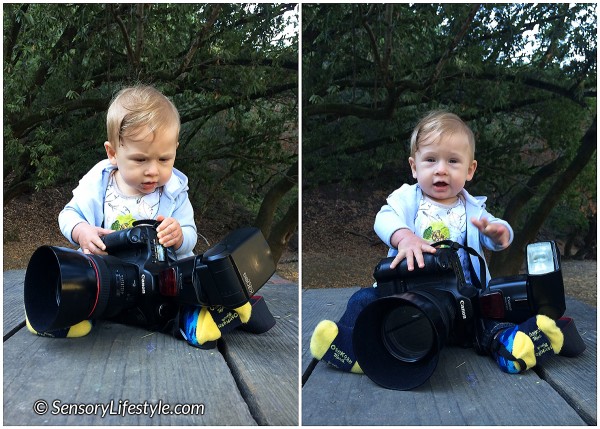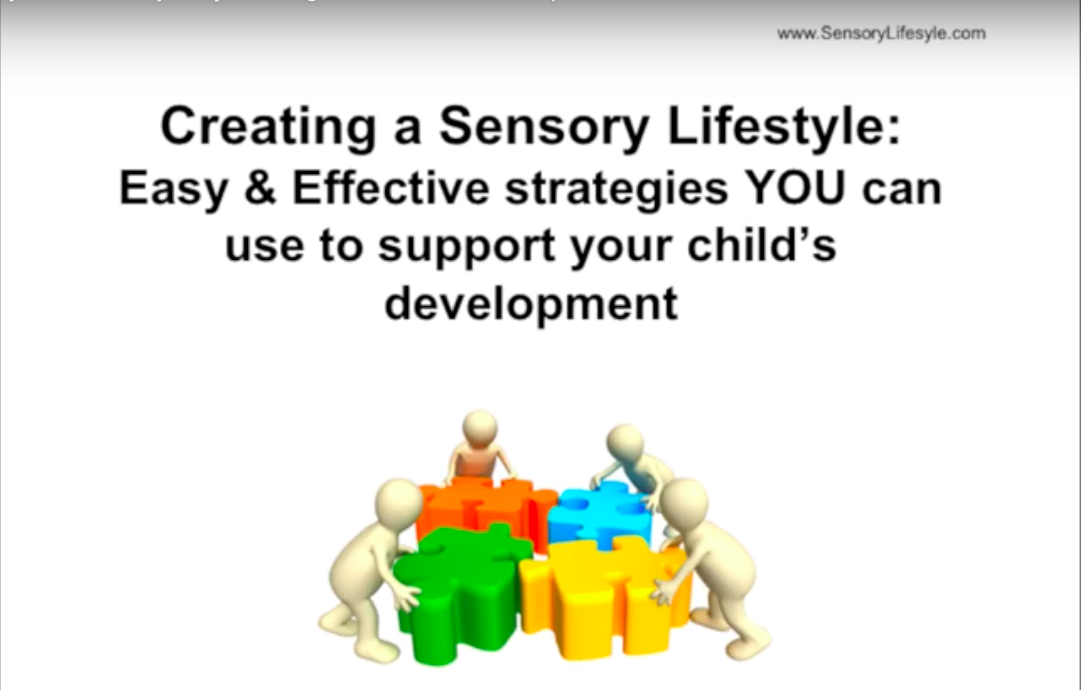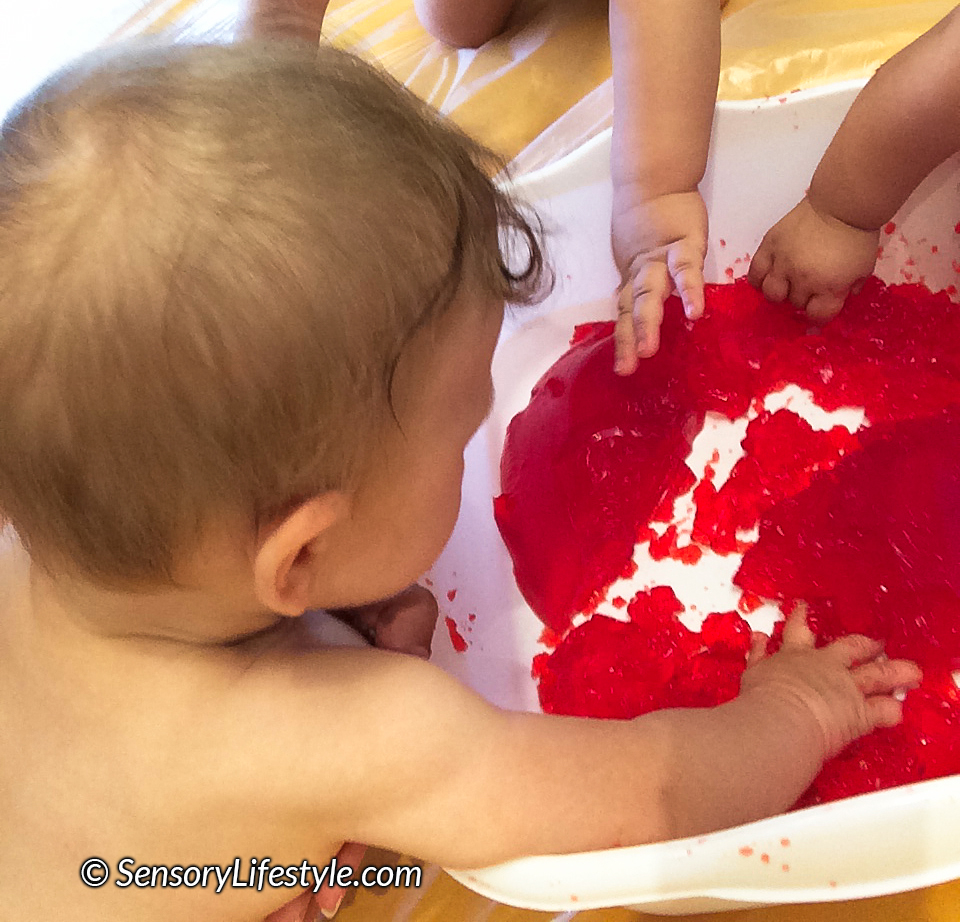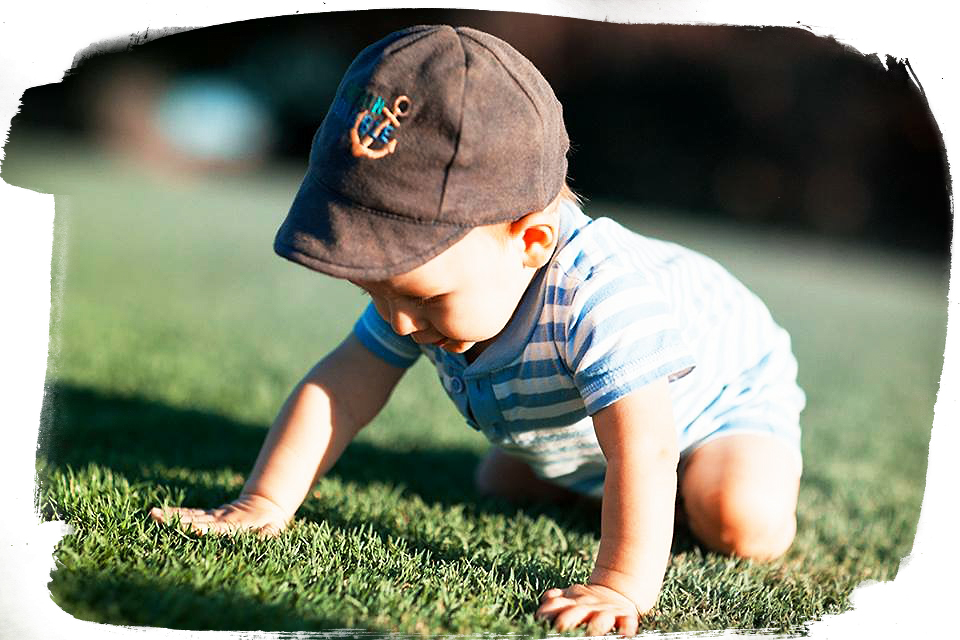Month 8: Top 10 Sensory Activities for your 8 month old baby
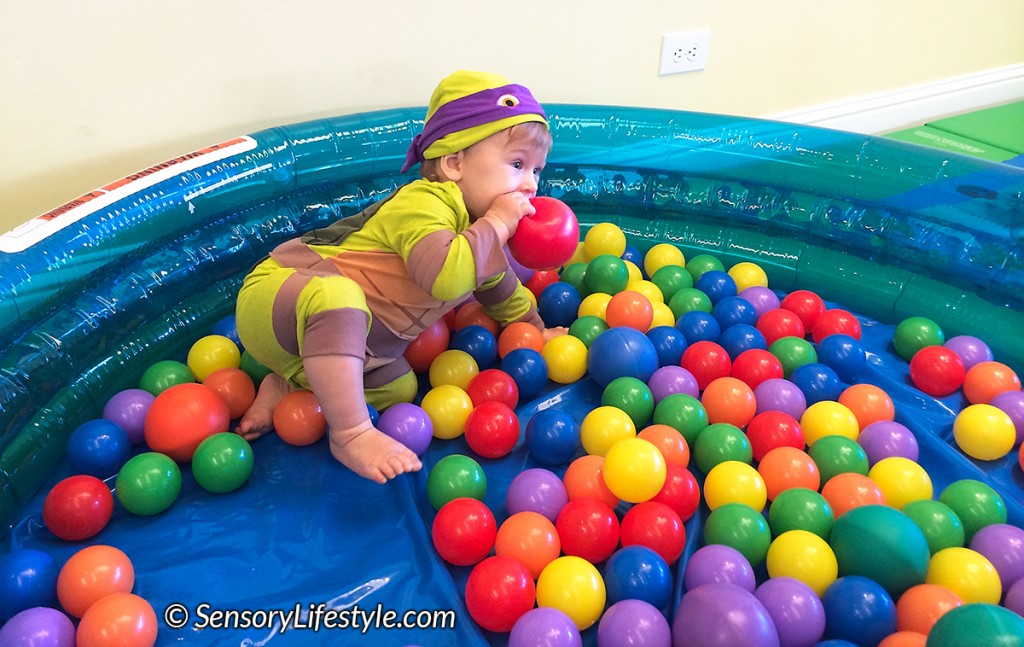
7 min read
As an Occupational Therapist and a Mom I have put together top activities for your 8 month old baby. These activities will support your baby’s cognitive (mind) and motor (movement) development.
I could feel its presence. It stood there looking directly at me. I felt it’s presence through me ఠ_ఠ .. Dad always says “fear is just a state of mind”.. I must push on as I nudged myself closer to it without blinking a single binary.. I leaned towards its BIIIGGGGG dark eye. It was looking back at me. This is it. I must overcome my fear! I pressed it… And it made few noises unfamiliar to me but I kept on pressing. Then a smiley welcoming face lit up on the back of it welcoming me to a world of photography. The 5D is alive. And not as scary as I originally thought. Dad uses it to capture moments in full frame color. It was now my turn to do some magic and let my creativity flow.
Until next month.
Exploration is a very important part of development. However, you always need to supervise and make sure they only have access to a safe environment.
Development
What to expect from your 8 month old
Here is a quick summary of a few milestones that you can start to notice with your 8 month old. Please note that this is not a complete list of Baby’s development.
Movement: Your little one may start to crawl. They may also start trying to pull themselves up to a standing position while holding on to the surrounding furniture.
Hand Skills: You may notice your little one starting to manipulate their toys with more ease. They will be banging their toys, tossing them or trying to put them into larger containers.
Pincer grasp: This is the ability to use the thumb and pointer finger to pick up small items. At this age your little one is starting to get the hang of using their thumb and index finger. At 8 months you might observe your baby picking up small items with their thumb and the side of their index finger.
Communication: Your baby’s communication is starting to become more meaningful as the ‘ma ma’ or ‘da da’ is directed towards a specific person. They also start to understand more basic words and may be able to follow simple instructions.
Activities for your 8 month old baby
1. Sign language
Everyone can use sign language. It is a great learning tool that promotes language and motor development.
Current research reports that you can start teaching your baby as early as 8 months. You may not notice immediate imitation but they are definitely gaining the understanding and the meaning of each sign.
Why teach it?
- It will reduce your baby’s frustrations and temper tantrums as they can communicate their needs.
- Sign language helps with the development of their fine motor skills as they try to form the different signs.
- It promotes language development.
How to start?
- You can purchase specific books or attend sign language classes.
- You can also look up different videos online. Note: Each country has their own sign language so look out for the country that you want when searching on line.
- Example of US sign language website: http://www.babysignlanguage.com
- Start with a few signs such as: more, all done, milk, eat, play and maybe their favorite animal.
2. Oatmeal sensory bin
| Skills Developed | Targeted Senses |
|---|---|
| Hand skills, hand eye coordination & bilateral coordination | Tactile & visual senses |
How to Play
Oatmeal is another great tool to experience different textures and not worry if it ends up in your baby’s mouth.
Simply fill up your container with oatmeal. Then add a variety of objects in it. It can include blocks, interlocking rings, containers of various sizes or some of their chewy toys.
Once the set up is complete let your baby explore the oatmeal but also the different objects in it. As they pull out different items talk to them about the shape, color, size etc .
3. Crawling games
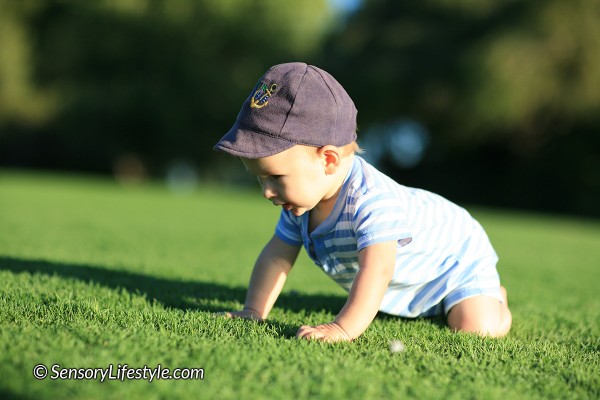
| Skills Developed | Targeted Senses |
|---|---|
| Strengthening of shoulders, arms, developing arches in their hands (required for fine motor skills), coordination between right and left sides of the body | Proprioceptive, tactile & visual senses |
How to Play
This is a great activity for those babies that are crawling on all fours. If your little one is creeping or scooting around they can still benefit from playing this game.
Things to do to encourage crawling:
- Place their favorite toys around the room and encourage them to retrieve it
- Get them chasing after their favorite pull toys
- Provide opportunities to crawl on different textures (grass, sand, carpet, wooden floors etc)
- Get them chasing after you or a sibling
- You can also fill an empty plastic bottle with hard candy or small bells and have them push it along the floor. Each time they go to grab it, it will roll a little forward and they have to chase after it.
4. Hide and seek
| Skills Developed | Targeted Senses |
|---|---|
| Object permanence (Object permanence is the understanding that objects or people still exist even when we can’t see them. Understanding this concept is an important cognitive milestone. To review the specific stages of object permanence, check out the Wikipedia page.), cause & effect and can also help with separation anxiety. | Visual sense |
How to Play
As your little one is gaining the understanding of object permanence, this is the perfect time to play hide and seek with their favorite toy.
Simply hold their favorite toy in front of them. Once you gain their attention then hide the toy. You can hide it behind your back, under a blanket or in a container. See if then they can locate it.
These games are great as they provide a sense of predictability. Things disappear and then they appear.
As your little one begins to develop separation anxiety, games like hide and seek will help them with understanding that even when things go away they will come back. Your child’s separation anxiety usually begins around this age or a couple months earlier and continues up until around the end of 2 years. Playing the hide and seek game in the next months or years to come is highly recommended to ease the feelings of separation anxiety. Of course the complexity of the game grows with the child.
5. Reading
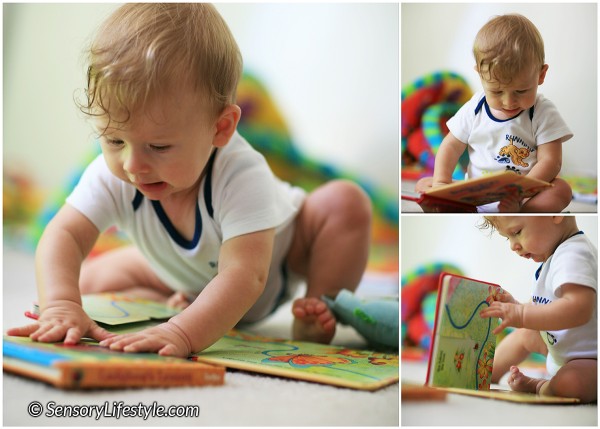
Reading continues to be extremely beneficial for your baby’s language development.
Have fun when reading to your baby. You can use variety of tones to make different sound effects. Maybe play around with different facial expressions or change your voice according to the different characters.
Also allow your child to explore their books. Their manipulation can help with further hand development.
6. Exploring the world
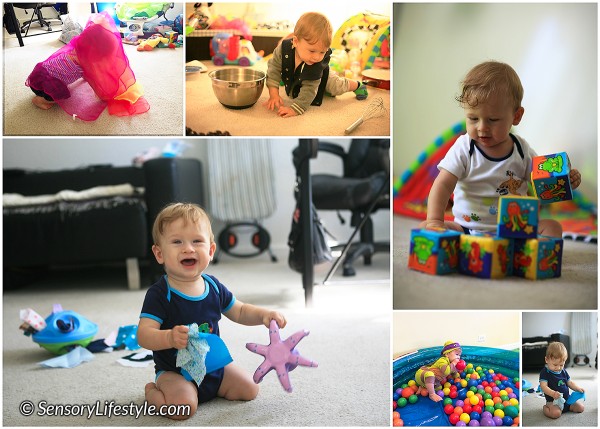
| Skills Developed | Targeted Senses |
|---|---|
| Hand skills (manipulation & grasp) & hand eye coordination | Tactile, visual & proprioceptive senses |
How to Play
Your little one will greatly benefit from continually exploring objects in their environment.
Once surrounded with objects they will grasp, manipulate and examine them. They will explore the objects visually, through their mouth and through the use of their hands.
As they continue to learn about the sensory qualities of objects, try to include a variety of objects. The objects or toys can be of various textures, sizes, densities, shapes, and colors. As they explore, they will use multiple senses and gain an opportunity to improve their coordination skills.
If your baby is not transferring objects from one hand to another try to gently encourage them to do so. This will promote better coordination and grasp between hands.
7. Chewy necklace
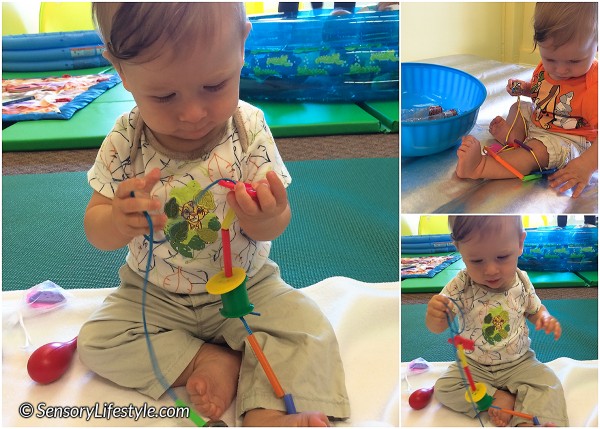
| Skills Developed | Targeted Senses |
|---|---|
| Hand skills (grasping and manipulation) & oral exploration | Visual & tactile senses |
How to Play
Simply place some safe toys onto a string and let your little one explore it with their mouth and hands. Make sure you don’t include anything toxic or small enough that it can become a choking hazard if pulled off. Only include items that safe to be explored by the mouth.
You can include a variety of blocks, small pieces of straw, large toy buttons, large bells.
Let them explore and have fun but also supervise your baby at all times.
8. Messy play
| Skills Developed | Targeted Senses |
|---|---|
| Hand skills (finger isolation) & hand eye coordination | Tactile sense |
How to Play
This is very easy to do. Simply smear applesauce, pudding or another pureed food on the highchair tray or the floor and let your little one explore it with their hands and mouth. They will get to play with yet another texture that will help with their hand development.
9. Tracking and reaching
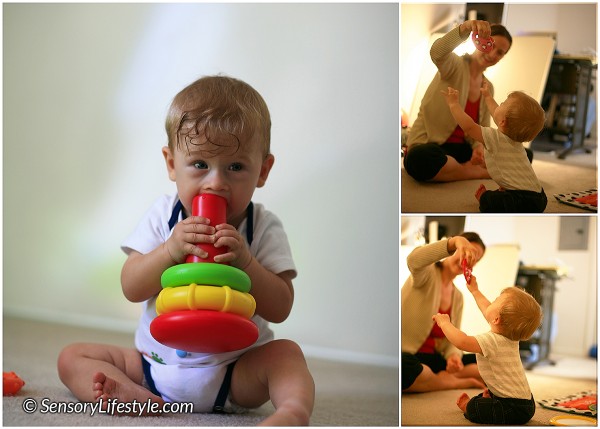
| Skills Developed | Targeted Senses |
|---|---|
| Grasping skills, hand eye coordination & crossing midline | Tactile & visual senses |
How to Play
Playing with your little one while they are sitting can have many benefits.
Hand eye coordination: Is the ability for the eyes and the hands to work together to complete specific movements.
Moving their favorite toy around them can encourage this skill. You can move the toy to the right, left, down to the ground or above their eye level. As they follow with their eyes, encourage them to also reach and grab it with their hands.
Crossing midline: This is the ability to cross the invisible line in the middle of the body with legs, hands or eyes.
Place toys on either side of your baby. Make sure it is within reach. Then encourage your little one to reach across their body. For example getting your little one to use their right hand to pick up a toy that is lying down on their left hand side. This will encourage them to cross their midline.
10. Let’s get kicking
| Skills Developed | Targeted Senses |
|---|---|
| Strengthening of leg muscles | Visual & proprioceptive senses |
How to Play
To get going with this game, get your baby laying on their back. Then place either a therapy/exercise ball or a beach ball just in front of their legs. Whatever ball you decide to use, make sure it’s big enough so they can see the ball move. Then see if they will kick it. If they can’t, then guide their legs to complete the action.
Once they kick their ball, make sure you verbalize what they did. ‘ Oh look, you did it! You kicked the ball with your legs. Yay!’
Get them kicking for as long as they stay engage as this is a great activity for strengthening their legs.
Summary: Activities for your 8 month old baby
There you have it. My top 10 Sensory Activities for your 8 month old. These are bound to spark up other ideas. Let me know what activities you have tried in the comments section below.
Remember: Each baby develops at their own pace. If your child is not ready or not interested in this month’s activities, just try them again in a few weeks.
~ Urszula
Disclaimer: The activities in this blog are intended for sensory play. They are not a replacement for treatment of children with Sensory Processing Disorder, are not medical advice and should not be used in place of the care of a medical doctor or other qualified healthcare professional. These activities should be facilitated and supervised by an adult. All activities are to be performed at your own risk and in no event shall Sensory Lifestyle be liable for any damages.
| ❮ 7 month activities | 9 month activities ❯ |
